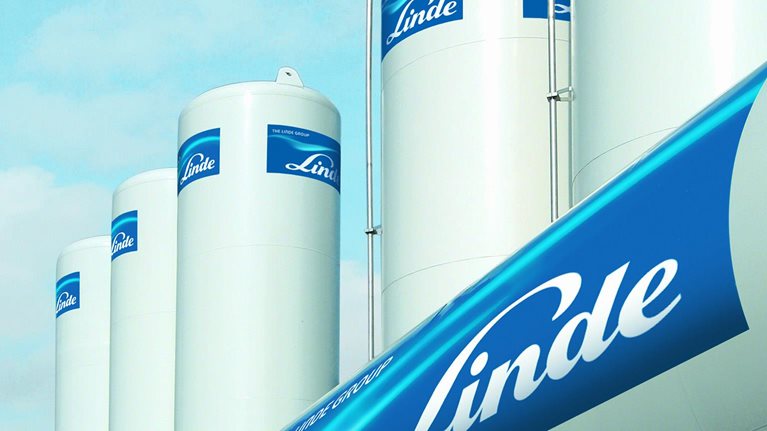Succeeding in the $24 billion U.S. market for over-the-counter drugs isn’t quite as easy as it used to be. Sure, the market is still growing – projected to add another $1.3 billion in sales over the next 5 years – and its fundamentals are solid, with attractive operating margins of 15-20 percent. But new challenges have emerged. Competition is increasing as both pharmaceutical companies and fast-moving consumer goods makers (FMCGs) chase the opportunity to sell non-prescription products. In addition, consumers are demanding new levels of innovation, both in product formulations and packaging. In this increasingly formidable environment, how can consumer health players continue to grow their business and gain market share?
According to McKinsey’s 2014 Customer and Channel Management Survey1, one of the biggest drivers that determines the performance of consumer companies is their ability to price products right. Companies that lead the way in pricing2 are able to charge 2 percent more per unit than the category average and see sales that are 3.6 percent higher.
Compared to other consumer packaged goods categories, consumer health has unique opportunities and considerations for effective pricing strategies. Because OTC categories are generally more complicated for consumers to navigate than food and drinks, pricing can play a valuable role in guiding consumers to the right product for the right occasion. A higher price point, for instance, can signal an added benefit or stronger efficacy. The greater penetration of private label goods in the OTC category also presents an opportunity for strategic pricing, since it is critical to balance price gaps between private label and more expensive branded products, while also investing in innovation. The switch of prescription drugs into over-the-counter medicines brings new competitors to the category and could change consumer behavior. For instance, consumers who are used to taking both Rx and OTC drugs for the same symptom might consider cutting down to only one drug. Pricing needs to react to such new category dynamics.
Here are seven steps that every consumer health company should take in order to capture the power of pricing.
1. Start with strategy, not P&L
Too often, the impetus for pricing actions comes from concerns over P&L. Margin holes are a sure-fire way to mobilize an organization to examine its pricing strategies. Unfortunately this is a fundamentally flawed approach: Consumers do not make purchasing decisions based on the state of your margins.
Instead, companies should start with questions about brand strategy: What is pricing’s role in driving the primary business objectives for the brand? Is it to grow volume, shift the product mix, or increase margins? Does your approach to pricing vary by segment, region, and channel? Having these tough conversations upfront and realizing the trade-offs between volume and profit can help companies align their organization around pricing’s role in the business and avoid pursuing the wrong outcomes.
2. Understand consumers’ “jobs-to-be-done”
Pricing should be based on deep insights about how and why consumers shop. Clay Christensen’s theory of “jobs-to-be-done” suggests that a product is not a just a product, but something consumers buy to get a specific “job” done. A consumers’ willingness to pay for a particular consumer health product can vary widely based on what “job” they want the product to do. Consider the difference between someone who buys a large pack of allergy pills while doing weekly grocery shopping and someone who rushes into a pharmacy next to Central Park to buy allergy relief after a stroll among blossoming trees. The latter will be willing to pay a premium for a convenient package, fast-acting dosage and easier-to-use format.
In consumer health, the product format, dosage, additional benefits and pack sizes should all be designed to fit different consumer need occasions, and then priced accordinly. Displaying a clear pricing tier along with other on-shelf communication can help consumers navigate the category better, which ultimately helps improve a company’s sales productivity. We have found that consumer health companies that spend years doing continuous innovation without using pricing as a key input end up with a product portfolio that contains numerous price tiers, all with no clear rationale or consumer insights backing them up. This creates complexity for the sales team, as well as confusion for customers. A skincare product for “sensitive skin,” for instance, might be priced at a premium to the base SKU, while the same product for “oily skin” is priced at the same level as the base SKU. Or perhaps premium products are measured by milliliters in some cases and in others, by unit.
3. Use heuristics to assess a brand’s pricing potential
When it comes to pricing decisions, there is a careful balance to strike between gut feelings and an over-complicated, time-consuming analysis. Before taking a deep-dive into a detailed pricing analysis, companies should use a heuristics scorecard to assess the brand’s overall pricing potential in order to identify where to spend additional effort. This scorecard covers four areas of consideration: category dynamics, competition, retail landscape, and internal economics. For each area we choose two to three key metrics that are easy to measure and automate. A cross-functional team from marketing, finance, sales, and supply chain decides on the metrics, weight, and scoring criteria. The discussion usually generates great insights and makes it easier to align key stakeholders for later pricing decisions. The scorecard also provides a communication tool to help the senior leadership understand the dynamics of why making a price change to a brand may or may not be a good idea. For example, if a brand is needing to increase prices in order to hit a margin threshold, but the other three areas all show very low scores – ie. the category is very elastic and not growing, the price gap between private labels has widened, and retailers’ margin have decreased – then maybe it’s time to look for other, healthier brands on which to raise prices. Or perhaps simply achieve your margin target by cutting costs.
4. Deploy a pricing toolkit to zoom in on opportunities
Once a company knows where to concentrate its analytical horsepower based on its brand strategy, consumer insights, and pricing potential, it’s time to deploy a set of pricing toolkits for a closer look at pricing actions.
Two basic pricing tools that are helpful are brand ladders and pack price curves. Brand ladders provide a one-page view on the pricing position and promotion strategy among all the key competitive players. Companies can use the ladder to identify opportunities in relative price gaps, overall promotion depth and frequency, and overlap and/or gaps in pricing tiers in the marketplace. The key to a good brand ladder is to use consumer insights to identify the right competitor set in the most relevant retail channels, so that you are comparing apples to apples.
A pack price curve plots the price per volume unit (e.g., ml, tablet) with increases in pack size. Companies can plot the curve using list price, average shelf price and non-promoted shelf price – both for its products and those of competitors. The different shapes of each line will uncover different insights. For example, if the gap between list price curve and shelf price curve is narrowing, that means retailers are taking a higher margin on small size products. The question then becomes whether retailers are doing this to compensate for a lower sales velocity (which companies could try to address with better placement or more promotion), or because they are capturing consumers’ willingness to pay for the convenience of a smaller pack (which suggests there is room to increase the list price of the small pack).
5. Think about in-store trade promotion as an integral part of pricing
When a company initiates a pricing action, its effect on promotional initiatives needs to be considered holistically. Is this an action that changes the overall strategy from a high everyday price with frequent and deep price discounts, to one of everyday low price with little promotion? Or is it a pricing action that leaves the overall promotion strategy intact? Companies need to remember that consumers see pricing and promotion as the same thing – it is the price they pay to “get the jobs done” – and thus a company’s decisions about these two efforts need to be linked in order to deliver a consistent message on the shelf.
6. Engage retailers in a strategic dialogue about the category
Consumer goods companies often dread the idea of having conversations about price increases with their large retail customers. One of the reasons for this is that these conversations tend to focus exclusively on cost inflation as the driver of price increases. A more effective approach is to frame these discussions around the longer term health of the category. We believe companies should have regular pricing conversations with retailers even when there is no immediate pricing action. This way, companies can tailor their stories around category growth and retailer profit instead of costs.
The most successful sell-ins are those grounded in consumer insights. One company, for instance, noticed that its product remained anchored to a retailer’s “magic” price point for several years. Taking a step back, the company analyzed over 2 million shopper transactions, which revealed not only that consumers were willing to pay more, but that volume was currently being sourced from higher margin products, thus reducing overall category value. The company built a sell-in story around this insight that involved resetting the pricing hierarchy, generating new promotional ideas to maximize category performance, and achieving higher overall margins in order to re-energize the category with new product investments, media, and in-store promotions. The result: the irrationally low “magic” price point vanished and, more importantly, a new dynamic emerged for conversations about price.
7. Organize to build the pricing capability
When a single function – usually finance or sales – takes over the role of creating pricing actions and decisions, biases arise. Companies with the most successful pricing performance build close collaboration across different functions within the organization, often setting up a dedicated cross-functional team to tackle pricing and promotion. Such a team must be positioned and staffed to act as both a catalyst and integrator, collecting input on pricing strategy from marketing, sales, and finance. It is responsible for driving core pricing processes, formulating the "recommended" pricing and promotion strategy, and developing alternatives for review and approval by the board or the pricing committee. The pricing team’s work must be transparent to the entire organization and the team must also ensure an end-to-end transparency of all pricing elements, including shelf prices, retail prices, net net margin, and trade spending. In complex markets, establishing a pricing team with one full-time manager and one or two analysts is highly advantageous.
While this list of steps needed for effective pricing can seem long, the reward is worth it. We have seen many companies gain a near-term return on sales of between 1 and 3 percent. For those consumer healthcare companies that manage to embed a pricing process and capability into the fabric of their organization, the long-term return on sales is in the range of 6 to 8 percent. Luckily, it is not as hard as it seems. Most companies are already accomplishing a few items on the list and the key is to step back and make the additional changes that will jump start your performance.
photo credit: http://www.flickr.com/photos/50382026@N06/4741451867
- Conducted by McKinsey & Company in collaboration with GMA and Nielsen, the Customer Channel Management survey has been taken since 1978 and is consistently ranked as one of the most influential surveys in the industry
- Defined as top quartile companies in price increase and sales increase index to the categories they play in


